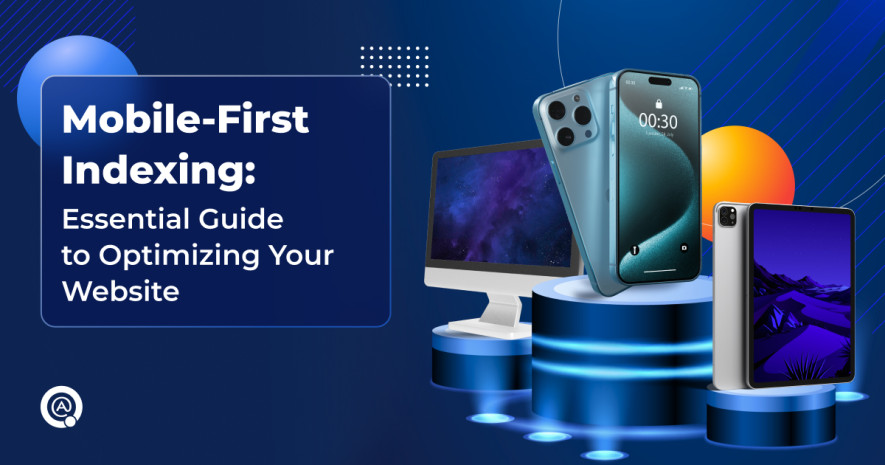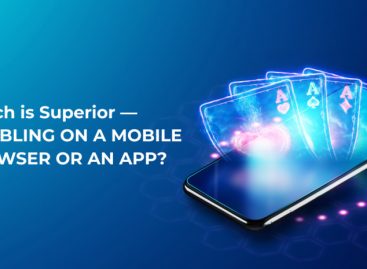- QATestLab Blog >
- Mobile Testing >
- Mobile-First Indexing: Essential Guide to Optimizing Your Website
Mobile-First Indexing: Essential Guide to Optimizing Your Website

Mobile-first indexing is a significant part of Google’s algorithm, shifting the focus for indexing and ranking websites from desktop to mobile versions. This focus is due to the rise in mobile internet usage, which has now surpassed desktop browsing. As of 2023, mobile devices account for roughly half of global web traffic. Therefore, optimizing websites for mobile indexing is crucial to maintaining visibility and ranking in search results.
Websites that are not mobile-friendly risk lower search rankings because Google prioritizes the best user experience. If a site is hard to navigate on mobile devices, it won’t rank as high as optimized sites. This can result in reduced traffic and fewer conversion opportunities.
It goes without saying that efficient mobile testing plays a vital role in optimizing a website for mobile usage. Our team has already discussed the importance of a mobile-friendly testing approach in one of our LinkedIn articles and in this previous piece on Mobile-Friendly Optimization.
Building on these discussions, we continue to explore mobile adaptability and its effect on product performance and marketing.
What is indexing and crawling?
Web Indexing and Crawling are the main engines for the searching process, they check the banks of data collections and provide direct communication of the information to users. Getting aware of these processes is fundamental for the optimization of your site, and its visibility.
Indexing defined
Indexing happens when search engines recognise and introduce web page information, and search engines with fast access to the information do the process. It is like the library student system, where every web page is a book, and the index is the catalogue. When you enter your query, the search engine scans its index to identify the pages containing the information you are looking for, and it presents the information to you.
Crawling defined
Crawling is the search engine’s process of finding newly added and updated pages on the web. Search bots, or spiders, or crawlers regularly travel through the Internet, follow links, and visit other pages. The primary objective is to collect data about web pages so they can be indexed.
The indexing and crawling processes are the main factors that determine web visibility, search relevancy, optimisation, and the competitive edge. A website can not be found by search engines without crawling, and if it is not indexed, it will not appear in any search results. Crawling is a process that updates indexes with the latest content, thus enabling users to obtain new and relevant information. The mastery of these processes on a website leads to the best results, a good content structure together with metadata is a godsend to crawlers and indexing. Well-optimized sites are indexed accurately and ranked higher, attracting more traffic.
How does Mobile-First indexing work?
The transition from the desktop-first to the mobile-first method of indexing makes quite a significant difference in website ranking and search results indexing. Google saw the need to change its approach, adapting to the behaviour of contemporary users. The mobile-first indexing approach means that Google primarily uses the mobile version of a website’s content for indexing and ranking. This ensures that users have a seamless and accessible experience when visiting the website on their mobile devices. The recognition of Google’s significance in mobile optimisation has made it an essential aspect of the digital era.
Steps to Achieve a Higher Mobile-First Indexing
- Checking Mobile Version
Google’s mobile-first indexing starts with Googlebot, the search engine’s crawling spider, gaining access to the site’s mobile version. The faux user, Googlebot, simulates a mobile user’s experience, including data that only a mobile user would get. The bot requests the mobile website using a user agent similar to a smartphone.
Our Approach: We focus on ensuring your mobile site is accessible and optimized. We check for responsiveness, page loading times, and mobile-specific errors to ensure a seamless user experience.
- Content and Structure
During the crawl, Googlebot processes the mobile site’s content, layout, and performance. This entails examining text, images, and videos, among other media types. Additionally, Googlebot reviews the mobile site’s metadata, internal linking structure, and overall user experience. The mobile site must be equipped with the same valuable content as the desktop version to guarantee consistent content indexing.
Our Approach: We evaluate and compare the content and structure of your mobile and desktop sites to ensure consistency. Our tests focus on identifying discrepancies in text, images, videos, metadata, and internal linking. By addressing these issues, we help maintain a consistent and user-friendly experience across all devices.
- Indexing Mobile Content
The data obtained from mobile crawling is then added to the Google index. The index is a large database that Google uses to find information in search responses. Through mobile-first indexing, Google stores and references the mobile version of the content as the primary source.
Our Approach: We ensure that all critical content is accessible. Our testing identifies and resolves any issues that may prevent content from being indexed, such as blocked resources or improper use of robots.txt. This helps ensure that your site’s most valuable content is indexed correctly.
- Ranking Based on Mobile Content
In the end, Google evaluates the indexed mobile content to determine search rankings. The quality, relevance, and performance of the mobile site are crucial factors that influence a site’s position in search engine results. Websites that ensure a smooth and high-quality mobile user experience have better chances of achieving higher rankings.
Our Approach: We conduct comprehensive testing to ensure your mobile site meets quality and performance standards. Our tests include evaluating load times, user experience and general website performance. By optimizing these factors, we help improve your site’s quality and overall user satisfaction.

By focusing on these critical areas and leveraging our expertise, we help you achieve a mobile-friendly website to perform well in Google’s mobile-first indexing.
Conclusion
With most users accessing the internet via mobile devices, ensuring your website is mobile-friendly is crucial for maintaining good search rankings and providing an excellent user experience. It’s imperative to focus on UX and UI, as these components significantly affect your website’s performance and ranking. By testing your website, you can detect potential weak spots and find ways to improve, which will positively impact your product’s success.
At QATestLab, we offer professional testing services to enhance your website’s performance. Our expertise in UI/UX testing, compatibility testing, and cross-browser testing ensures a smooth and efficient user experience. Our specialists are skilled in developing seamless mobile experiences that benefit your business goals. If you’re looking to improve your website and provide a better experience for your users, contact us to prepare a tailored solution for your needs.

Learn more from QATestLab
Related Posts:
- Automation Testing for Mobile Apps: Why It’s Essential and Our Key Services
- E-show 2025: The Rise of AI and Automation in E-commerce
- How One Bug Can Wreck Your Reputation — And How QA Prevents It
About Article Author
view more articles






